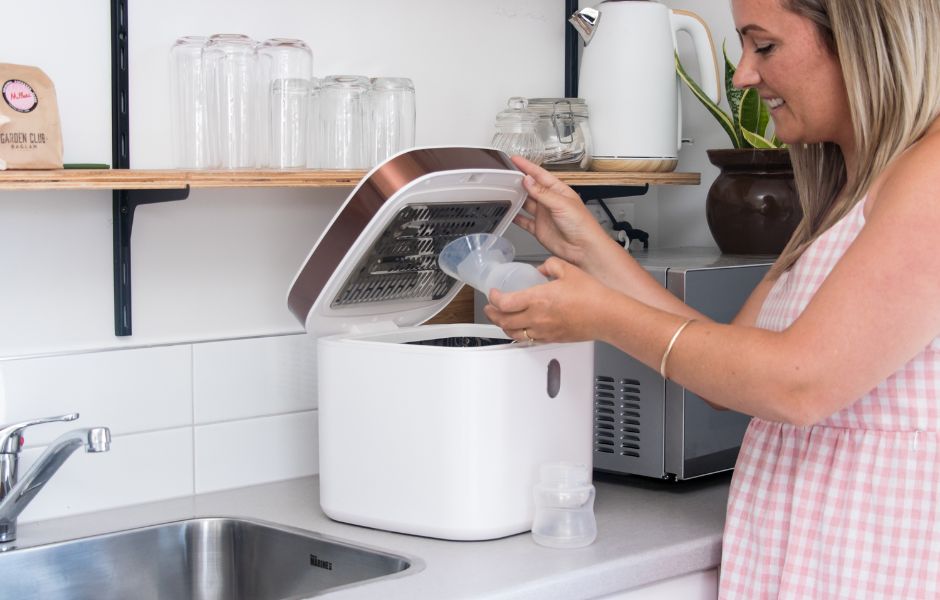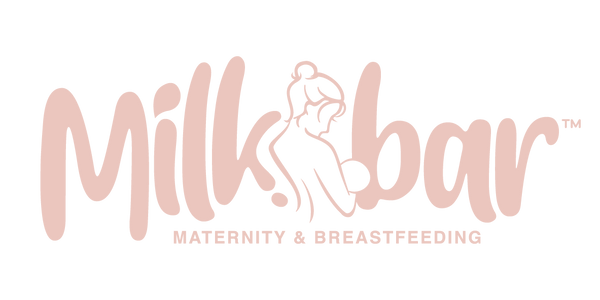
A Guide to Sterilising
Share
Sterilising your breast pump and bottles after each use is highly important for hygiene and the safety of yourself, baby and milk. It is vital to ensure no milk residue remains after you have completed a pumping session, making sure the pump and accessories are clean and dry before your next session.
Just like storing milk, sterilising has a few guidelines and rules to ensure the highest level of safety and hygiene, in this blog we discuss some of the different sterilising techniques, our preferred methods for our products, and some guidelines on when sterilising vs. cleaning is appropriate.
In New Zealand the recommendation for sterilising baby equipment is to do so until your baby is at least 3 months old and after that thorough washing and rinsing are enough. It is important to note that general hand hygiene plays an important role when preparing bottles or pumping.
Methods
Common methods that you may have previously heard of include; Boiling Water Method, Microwave Steamer Method, Milton Solution Method or the use of a UV Steriliser.
The Milkbar Advanced Flow Breast Pumps and Kits are best cared for by following either the Boiling Water Method, Steamer Method or using a UV Steriliser (more about this below), as the Milton solution and other powdered solutions are too harsh on the liquid grade silicone and causes it to be more prone to wear and tear, which requires it to be replaced more often as well as potentially causing a decrease in suction power when pumping.
Boiling Water Method
Boiling works by raising the temperature high enough to kill any bacteria left over after washing.
- Place clean kits, bottles, teats and utensils in a large saucepan on the back burner of the stove, not turned on yet.
- Add enough water to cover all the equipment, making sure there are no air bubbles.
- Bring water to the boil, and boil rapidly for 5 minutes.
- Turn off the stove and allow the water to cool down.
- Take the equipment from the saucepan and shake off any excess water.
- If you are not using them straight away, put the parts on a clean surface and allow to dry. Ensure parts are completely dry before next use
Re-boil the bottle and other equipment if it is not used within 24 hours.
Helpful tips;
- This seems to have faster drying process than the steamer method as the parts are hot so dry a lot faster when they are pulled from the water
- Be sure to put on a timer for the 5 mins, we know #mumlife can get away on us and 5 mins can quickly go by (we wouldn’t want you to leave the stove on or cause danger
- Remember parts will be HOT - please keep yourself and little one safe and take necessary precautions.
Microwave Steamer Method
Much like boiling, steaming works by raising the temperature high enough to kill bacteria. There are several different types of sterilisers available — follow the instructions provided by the manufacturer
- Place kits, bottles and teats in the sterilizer with the openings facing down.
- Follow instructions for adding water to the unit and turning it on.
- Leave bottles in the steriliser until they are needed.
- If you are not using the kits straight away, check instructions for how long you can leave them in the steriliser before you have to re-sterilise them.
- Parts must be completely dry prior to expressing again
- You can purchase steamers from any local baby stores, Farmers etc.
- Please follow manufacturer directions and be aware of steam and the heat that can come from these sterilisers, taking necessary precautions to avoid any burns
UV Steriliser
This is our favorite method to date, our brand new UV steriliser is a game changer in sterilising, drying and storing
- Rinse kits, bottles and teats with warm water and rid them of all milk residue, ensuring kits are broken down and separated
- Shake any residual water from the parts
- Place in the UV steriliser, using the rack for small diaphragms and valves, bottles upended on the bottom
- Close the lid and chose your selected mode
- Once the cycle is completed, store the kits and parts, either using storage mode on the steriliser or in a clean sealed container ready for next use.
Notes
- Our favourite option is ‘AUTO’ which will sterilise and dry the kits and bottles for you in 50 minutes, meaning the kits are clean and dry for your next expressing session
- Wipe out the steriliser weekly to ensure it remains clean and no water residue remains
- The unit does not have a lock, however will automatically switch off if the lid is opened mid-cycle, however please keep out of reach of children.
- As this is a liquid and solution free method, you can also put the caps and tubing in the steriliser, as well as other items such as pacifiers, tethers and other items as needed.
When and what you need to Sterilise
Parts
- Silicone Inserts, Diaphragm, Valves, Bottles and Teats require cleaning and sterilising
- Tubing and Caps can be wiped down, as this is a closed system Milk should not go into the tubing or caps and these need to remain dry. Tubing needs to remain completely dry as any liquid could flow through the unit and cause liquid damage and system failure.
Sterilising vs Cleaning
- Sterilise after each use up to 6 months, thereafter pump parts, bottles and teats can be can cleaned after each use and sterilising completed daily
We also note, it is recommended to pre-boil and cool drinking water for your baby (up to 12months)
Important Information
- Please read your breast pump user manual prior to use
- Please read manufacturer instructions on a purchased steriliser or steamer
- Make sure you never leave hot or boiling liquids unattended or within reach of children.
- Remember, steam can burn or scald just as badly as boiling water.
- Always wash your hands thoroughly before handling equipment that has been sterilised.
- We do not recommend using chemicals or solutions such as Miltons or Pigeon cleaning solutions as these can cause damage to the silicone and decrease the effectiveness of the pump and accessories.
Please do touch base with our friendly team at info@milkbarnewzealand.com if you have any questions we can further assist you with x
